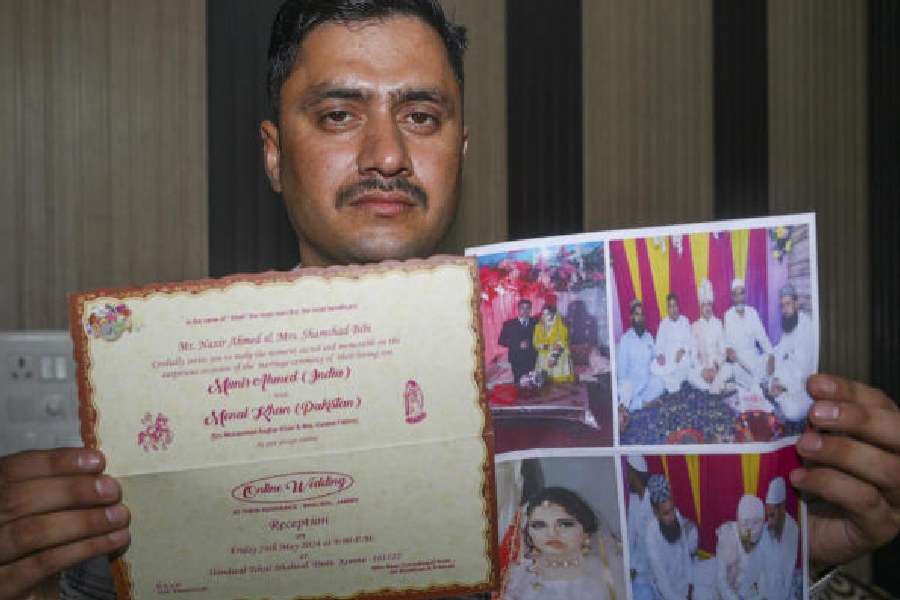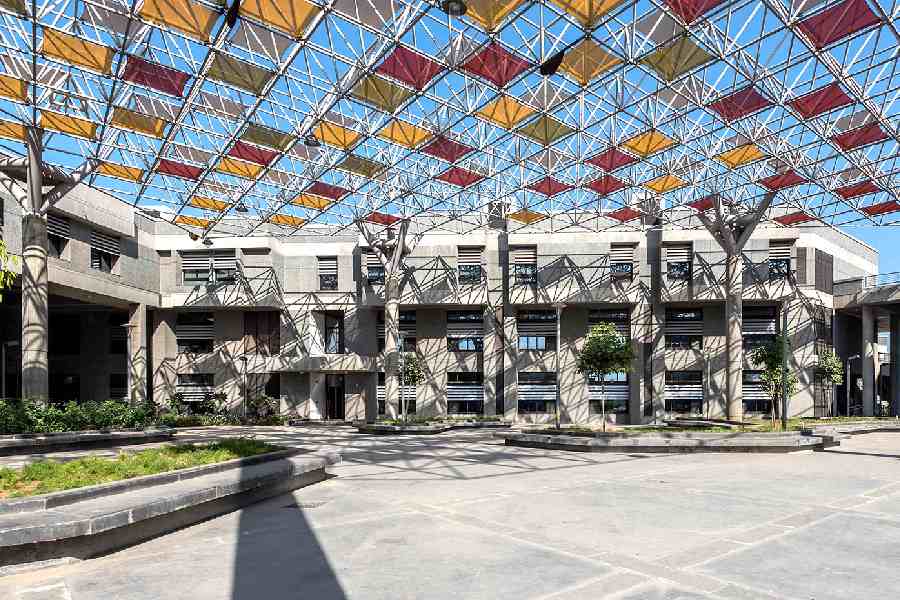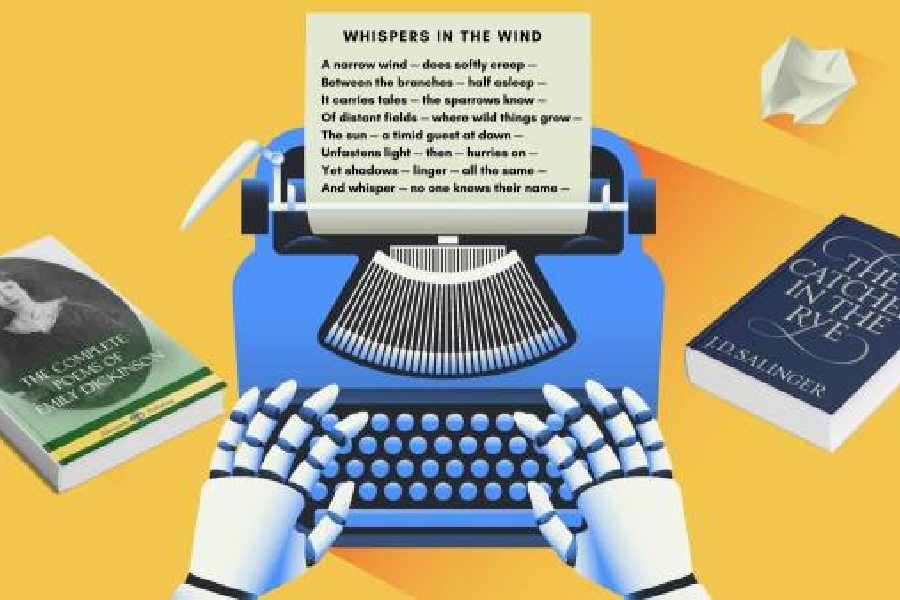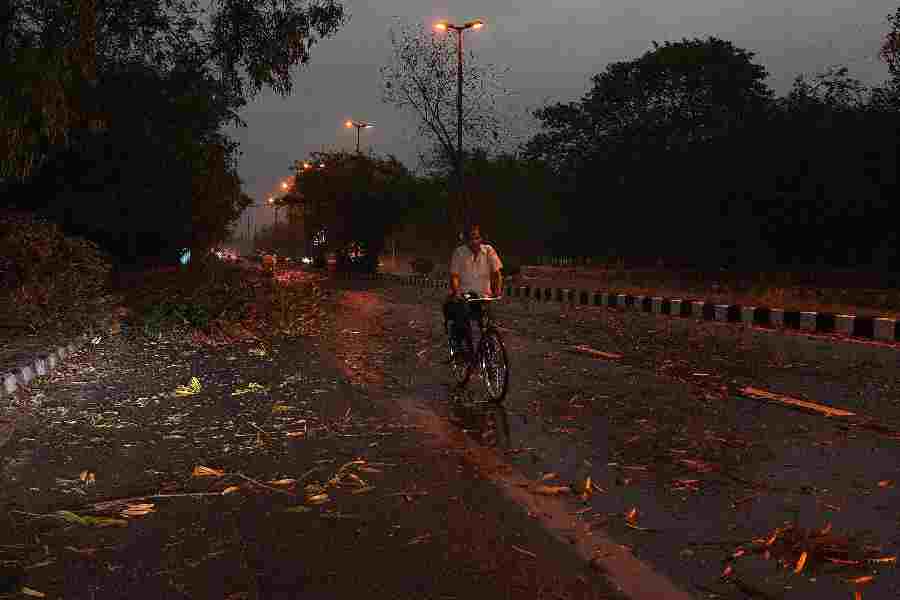 |
| Dayanita Singh |
Panaji, Jan. 1: Living in a Goan village has shaped her art in unexpected ways, so much that prominent photographer Dayanita Singh has now surprised those familiar with her work by coming out with photographs that simply don’t have people in them.
Dayanita’s latest photographs are black and white pictures from Mumbai and Goa. She says of her work, that is on exhibition at the beach village of Calangute: “It’s of spaces without obvious people, as though peopled by unseen generations. There are no people in the photographs, yet they are full of mental energy.
“It is hard to describe one’s own work. Hopefully, they will force the viewer to make their own stories, rather than (play the role of) photographs that tell the whole story as in photojournalism. (Thus they could be) more engaging.”
She added: “I think they are quite evocative. But it’s not always clear what they evoke.”
Until Dayanita visited Goa in 1999, she says she could “never imagine making images without people”. But the change has been drastic. “Now I photograph clouds,” she says.
Dayanita, based in Delhi, has made a name for herself — in an otherwise male-dominated field — in capitals across the globe with her feature and news-based photographs.
A retrospective of the artist’s work is planned at the Hamburger Bahnhoff in the German capital of Berlin this year, along with a book from publisher Scalo, focussing on the same work.
“My publisher and guide made the decision on the retrospective after seeing my Goa images. That’s the kind of difference Goa made to my work,” Dayanita says.
In January, the curator of the Bahnhoff is expected to come to India to choose 100 images for the show. Besides Calcutta, the woman curator is also keen to visit Goa “to understand how my work shifted so drastically”.
Dayanita has been particularly infatuated by the old world charm of a quaint village called Saligao, which lies just outside the beach belt.
Except in recent years when villagers protested the large quantity of water being transported from here to the beach belt, and the dumping of holidayers’ garbage nearby, the village has been aloof from the commercialised beach belt.
“I don’t know how (the curator) would understand the sense of Saligao without actually living there. I miss Saligao deeply,” Dayanita said.
Her “Goa work” formed a major part of a solo show put up at the Frith Street Gallery in London in the past year. “I think the Goa work will always be part of any major show I have.
“Most people cannot believe this is Goa. (There are) no beaches, no colour, just little details, as though hints of something, not quite telling the whole story. So people get intrigued,” she said.
She says someone could start “architectural tours” in a Goa struggling to find ways to emerge from its current image of a low budget sand-and-surf tourist destination.
Such tours, she suggests, could be a way for the interesting houses of the region to pay for their maintenance. Among her plans in the past were to work on a dream museum in Goa, a photo studio and centre “where I could invite people from various fields”.
Dayanita was at one stage also contemplating open-air film shows. This way, she feels, Goa would be able to claim its historical legacy as a meeting place of the East and the West, both in the past and the present.
When Dayanita broached her ideas to the New York-based International Centre of Photography, they agreed to run their travelling courses out of Goa. “That’s the thing about starting something in Goa. No one says ‘no’ to coming (here),” Dayanita said.
Over the past year, Dayanita’s book titled Myself Mona Ahmed was published by Scalo. It covers 13 years of photographing Mona, a eunuch whom the photographer sees as a friend. “The best part was that she (Mona) wrote the text for the book, dictated as e-mails to the publisher in Switzerland. So she decided what was told and how,” Dayanita said.
The photographer also had a show of her work on Varanasi at the Ikon Gallery. These included images from the Anandamayee Ma Ashram. Dayanita also spent a month as artist-in-residence at the Isabella Stewart Gardner Museum.
Her dream, however, is “Inshallah” (God willing) to one day start a museum in Goa. “I also would have liked to make an archive of all the family portraits existing in Goan homes.” She added that her personal plans compelled otherwise. “Who can fight fate?”
While some of Dayanita’s work is being shown in cities such as Munich and Florida, for now she would prefer that there were “no India jamborees”.










